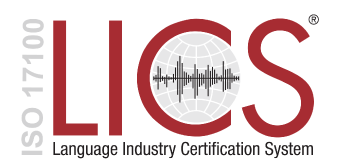In the interconnected and modern business world, understanding and implementing Technical English can mean the difference between success and failure. If you’ve been searching for answers about this unique language style, then you’re in the right place.
We’ll take a deep dive into the world of Technical English, its history, characteristics, principles, and provide examples to enrich your understanding. We’ll also examine the importance of technical translation, the difference between everyday English and Technical English, and how to improve your command of this specialised language.
Please contact us if you have any queries about technical language and how it might help your business operations.
Let’s look at how we define technical English, who uses it, where you can learn it, and its benefits. But first an overview of Technical Language.
What is Technical language?
Technical language, often called jargon, is the specialised vocabulary used by a particular profession, industry, or group. The words and phrases used in technical language are precise and often can only be replaced by altering the meaning.
What are the advantages of Technical language?
Technical language provides several advantages:
- Precision: It allows for clear communication without room for ambiguity.
- Efficiency: It conveys complex information succinctly.
- Professionalism: It demonstrates expertise in a specific field.
- Globalisation: It aids in the standardisation of technical communication worldwide.

What are the benefits of Technical translation?
In a globalised world, technical translation allows businesses to communicate accurately and effectively across different languages and cultures. Its benefits include:
- Accessibility. It makes information available to a global audience.
- Compliance. It ensures adherence to international laws and regulations.
- Market Penetration. It facilitates entry into new markets by overcoming language barriers.
- Customer Satisfaction. It provides clients fully understand the products and services they are buying.
- Clear structure, higher repetition
- Lower translation costs due to increased suitability for computer-assisted translation tools
- Better understanding of documentation by non-native English speakers
- Lower risk of mistakes and errors
- More reliable maintenance and installation
- Increased safety
As a provider of technical translation services, we will be happy to discuss the technical translation process and how technical English can help you. Please get in touch with us today and we will gladly advise you.

History of Technical English
Simplified Technical English was first developed as a controlled form of English for the aviation industry at the initiative of the European Association of Aerospace Industries in the 1980s. At the time, it was called AECMA Simplified English. Its goal was to help non-native speakers of English better understand technical manuals and instructions.
Over time, this language has further evolved to incorporate more specific, industry-related terms, making it more specialised and targeted. The introduction of STE was a significant milestone in this evolution, facilitating a broader understanding of technical documentation.
In 2005, this language variant was renamed to ASD Simplified Technical English, or STE as we know it today. Simplified Technical English is used as a guideline by many writers of technical documentation, and is also prescribed by several military and commercial specifications.
Difference between English and technical English
Technical English simplifies the rather complex rules of standard English and replaces difficult terminology with simpler synonyms. This reduces the overall complexity of the text and makes the documentation much easier for readers to understand.
Characteristics of Technical English
The exact rules of Simplified Technical English are laid out in the ASD-STE100 Dictionary.
In essence, they cover the following aspects:
- sentences should be no more than 20 words (for procedural sentences) or 25 words long (for descriptive sentences)
- paragraphs should contain no more than six sentences
- any type of slang or jargon should be avoided
- active voice is preferable, passive voice should be avoided
- sequential steps should be written in separate sentence rather than in one long run-on sentence
- gerunds and present participles should be avoided
- articles “a” and “the” should be used wherever possible
- simple verb tenses are preferable (i.e., past, present, future)
- any instructions should be as specific as possible to avoid ambiguity
- Use of specific technical terms.
- Clear, concise sentences.
- Objective, factual tone.
- Detailed descriptions.
What are the 5 principles of technical writing?
Technical writing, the foundation of Technical English, revolves around:
- Clarity: Ensuring the information is easy to understand.
- Accuracy: Providing factual and correct information.
- Comprehensibility: Making sure the audience can understand the message.
- Conciseness: Delivering information in as few words as possible.
- Consistency: Using consistent terms and format.
What is the purpose of technical language?
The primary purpose of technical language is to communicate complex information accurately, efficiently, and unambiguously. It enables professionals within specific industries to exchange detailed, precise information.
Do you need book, manuals or legal document translations?
- Notarized translations
- Professional translations
Do you need translations of manuals or operating instructions?
- Translation of manuals
- Over 800 language combinations
Simplified Technical English
Simplified Technical English (STE)—or ASD-STE100 Simplified Technical English as it is officially called—is an international standard for using English in technical documentation. It is designed for use by non-native and native English speakers alike and uses simplified grammar and terminology.
This makes it easier for readers to understand and prevents mistakes, which is especially important in technical documentation and in the translation of manuals.
It was initially created for aerospace industry maintenance manuals, but its usefulness has been widely adopted across various industries.
The principal purpose of STE is to increase the clarity and comprehensibility of technical documentation, making it more accessible to a broader audience. It accomplishes this by restricting the grammar and vocabulary to a defined subset of English.
Examples of Simplified Technical English
The following table shows some examples compared to standard English:
| Standard English | Simplified Technical English |
All levers must be turned slowly in order to prevent strong steam jets which can damage both hose lines and components. | Turn all levers slowly to prevent strong jets of steam. Steam can damage hose lines and components. |
| All levers must be closed manually. | Close all levers by hand. |
Standing close to the levers when the system is under pressure is not recommended. | Do not stay near the levers, if the system is pressurized. |
| Allocate a task to a technician. | Give the technician a task. |
| Eliminate all sharp edges. | Remove all sharp edges. |
| The aircraft should not be flown if it has a damaged wing. | Do not fly the aircraft if the wing is damaged. |
Who needs technical English?
Many standard English terms can have several different meanings, and English grammar uses complex structures. This may cause confusion among non-native readers. In everyday life, this may not be a big issue, but when it comes to security and safety (think flying an aircraft), major problems can arise out of communication difficulties or misinterpretations.
Today, Simplified Technical English is mandatory in:
- aviation industry.
- military sector.
- software development.
- information technology (IT).
- automotive industry.
- manufacturing segments.
- mechanical engineering.
- and others similar industries and sectors.
EHLION, offers specialised mechanical engineering translation services and IT translation services.
Most maintenance manuals are written in technical English to ensure the instructions they provide are unambiguous and clear. What’s more, using technical English creates an excellent base for translation if the text needs to be made available in more than one language.
The clear and simple structure of technical English facilitates translation and ultimately keeps costs down.
How you can learn and improve your technical English
Although reading technical English is simpler than reading standard English, writing it is a whole other story. Authors of technical English need to undergo specific training to familiarize themselves with the intricacies and rules of this variant.
Courses and qualifications are available from a wide range of providers, if you’ve decided to learn technical English.
Some examples of providers are:
- Pearson Education with a four-part course for students in technical or vocational occupations and company employees training at work
- Udemy with a basic, low-cost course on technical English for beginners
- University of Derby, UK, with a course leading to a Technical English Certificate of Credit
- Penn State University, USA, with a preparatory course leading up to a Technical English Competence Exam.
Do you need book, manuals or legal document translations?
- Notarized translations
- Professional translations
Do you need translations of manuals or operating instructions?
- Translation of manuals
- Over 800 language combinations
Technical English in a nutshell
In summary, Technical English is a specialised language style that enables accurate and efficient communication within and between industries. Its mastery is crucial for businesses and individuals operating in technical sectors, particularly in today’s globalised business landscape.
Your business might also benefit from technical English.
Mastering Technical English and its translation can be a daunting task. That’s where our professional translation services come into play. With expertise in various fields and a deep understanding of the nuances of Technical English, we are well-equipped to help your business communicate effectively and accurately on a global scale.
Technical English is not just a language – it’s a tool for success in the modern business world. Make sure your company is equipped.














